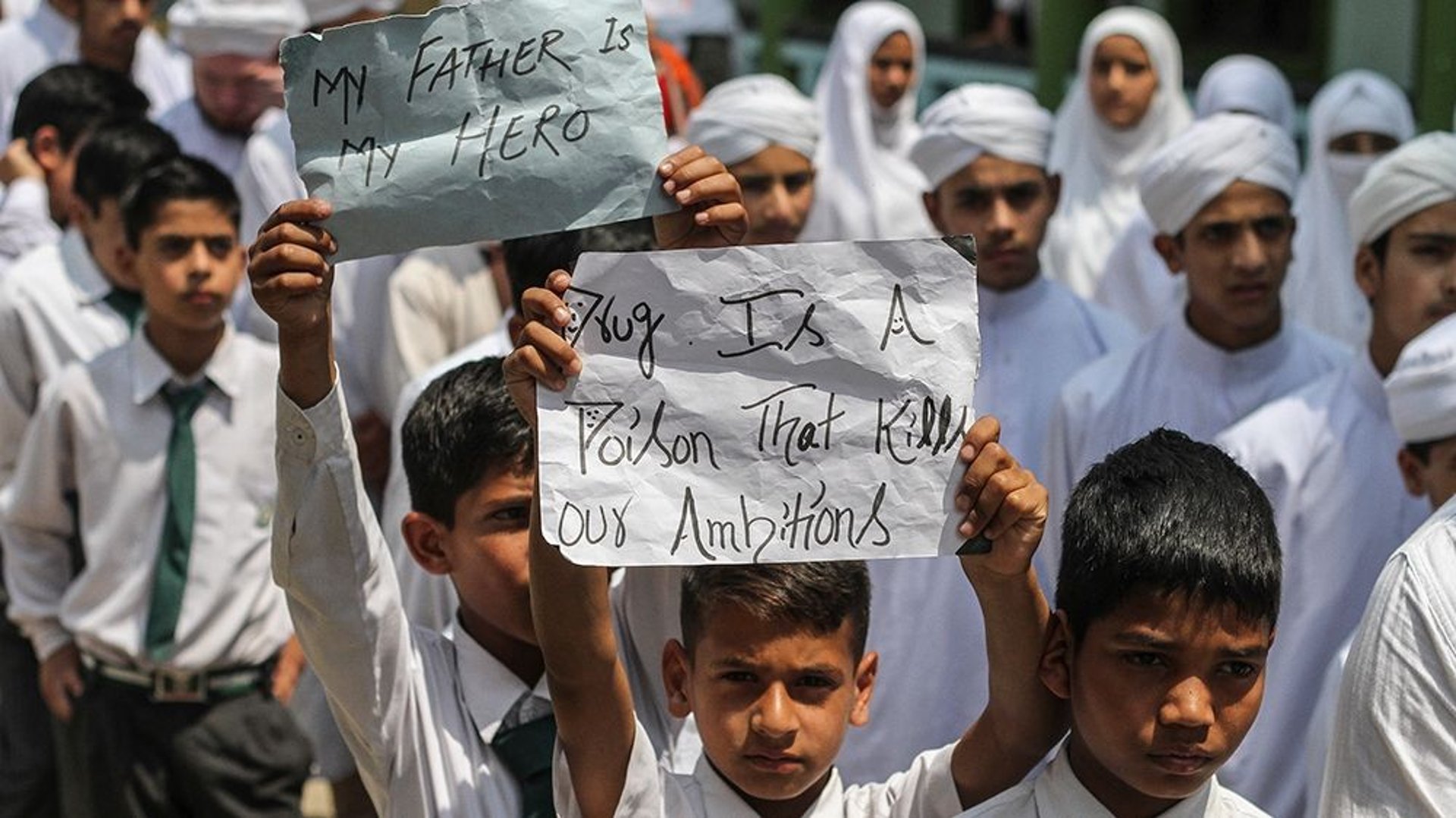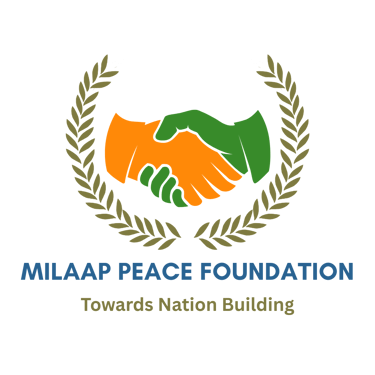
Addressing the Substance Abuse Crisis in Border Areas of Pulwama, Kashmir
From Conflict to Addiction: A Holistic Model for Rehabilitation and Reintegration in Pulwama
Location: Pulwama District, South Kashmir, Jammu & Kashmir (Union Territory of India)
Timeframe: 2024 - Present
Key Stakeholders: Local Communities, Government Rehabilitation Centers, CSR Partners, Milaap Peace Foundation.
The Problem: A Crisis Within a Crisis
Pulwama, a district in South Kashmir, has been historically known for its agricultural prosperity and intellectual capital. However, decades of geopolitical conflict have created a complex socio-economic environment with profound psychological trauma, high unemployment rates, and a loss of social cohesion.
The Emerging Epidemic
In this volatile context, drug abuse has emerged as a devastating silent epidemic, particularly among the youth. What began with the misuse of prescription painkillers (like Codeine-based syrups) has rapidly escalated to more potent and dangerous substances, including heroin.
Compounding Factors
Psychological Trauma
Chronic exposure to conflict has led to widespread untreated PTSD, anxiety, and depression, leading individuals to self-medicate.
High Unemployment
A lack of economic opportunities, especially for educated youth, creates a void filled by despair and addiction.
Pulwama's location makes it vulnerable to narcotics trafficking routes from across the border.
Border Proximity
Normalization of Prescription Drugs
The widespread acceptance of prescription drugs has blurred the line between medical use and misuse, paving the way for increased drug abuse.
The Human Cost
The crisis is tearing apart the social fabric—eroding family structures, increasing domestic violence, and crippling the potential of a generation meant to lead Hanumangarh's future.
The National and Local Response
The Government of India has recognised this national threat through key policies:
National Initiatives:
Nasha Mukt Bharat Abhiyan (NMBA): Launched in 2020, the Nasha Mukt Bharat Abhiyan (Drug-Free India Campaign) is a nationwide movement designed to create awareness about the harmful effects of drug use and to promote community participation in prevention efforts.
The campaign targets 272 vulnerable districts across the country, identified based on the prevalence of drug abuse, with Jammu & Kashmir (J&K) being one of the major focus regions due to rising substance use among youth.
Activities under NMBA include school and college outreach programs, community-based awareness campaigns, training for peer educators, and capacity-building for NGOs and local governance bodies.
The program also leverages digital platforms and social media to reach young audiences and encourage early intervention and counseling.
National Action Plan for Drug Demand Reduction (NAPDDR): The NAPDDR, implemented by the Ministry of Social Justice and Empowerment, serves as a strategic framework for reducing both the demand and supply of drugs.
It provides financial support for the establishment and operation of Integrated Rehabilitation Centres for Addicts (IRCAs), Outreach and Drop-in Centres (ODICs), and Community-based Peer-Led Intervention programs (CPLIs).
The plan emphasizes a multi-pronged approach—including prevention, treatment, and social reintegration—while partnering with NGOs, state governments, and law enforcement agencies. It also encourages research and data collection to track trends, identify new hotspots, and refine intervention strategies.
Efforts in Jammu & Kashmir
In Jammu & Kashmir, the regional administration has recognized the growing drug crisis—particularly the spike in heroin and pharmaceutical opioid abuse among youth—as a critical threat to public health and social stability.
Rehabilitation facilities have been established across the region, including district-level de-addiction centers, hospital-based treatment units, and community counselling programs.
Awareness drives are regularly conducted in schools, colleges, and rural areas to educate young people and parents about the dangers of substance abuse. These efforts often involve collaboration between police departments, social welfare offices, NGOs, and religious organizations to ensure a community-driven approach.
The Critical Gap: Post-Rehabilitation Reintegration
Despite these commendable efforts, the biggest challenge remains sustainable reintegration for recovering addicts.
Many individuals completing rehab programs face social stigma, family rejection, and a lack of livelihood opportunities, making it difficult to rebuild stable lives.
Without access to employment, vocational training, and social support systems, relapse rates remain alarmingly high.
Experts emphasize the need for comprehensive post-rehabilitation support, including job placement programs, micro-financing for small businesses, and community mentorship networks to help recovering individuals regain a sense of purpose and belonging.
Our Intervention: The Pulwama Pilot Project
MILAAP PEACE FOUNDATION designed a targeted, three-pillar intervention model to address this gap directly.
Identification & Vetting (The Partnership Model)
Action: We established formal partnerships with government-run rehabilitation centers in Pulwama.
Process: Social workers integrated with these centers to identify motivated individuals in the final stages of recovery who demonstrated a commitment to rebuilding their lives.
Outcome: Creation of a pre-vetted, reliable pool of candidates ready for the next step.
Integrated Skill Development (The Empowerment Model)
Corporate Integration & CSR Leverage (The Sustainability Model)
Action: An intensive "Employment-Ready Recovery Program" was launched.
Curriculum:
Soft Skills: Communication, financial literacy, interview preparation, and relapse prevention strategies.
Technical Skills: Focus on local economic sectors: Agriculture Technology (precision farming), IT & Data Entry, and Handicrafts & Carpentry.
Cultural Reconnection: Workshops on local art and heritage to rebuild a positive identity and pride. Travel to different cities.
Outcome: Graduates received a certification, making them job-ready with both skills and confidence.
Action: We are engaged with corporations, primarily in Maharashtra and other states, with a compelling value proposition for their CSR funds.
Pitch: "Your CSR investment doesn't just rehabilitate; it creates a loyal, skilled employee. We handle the training, vetting, and initial support. You provide the dignified opportunity."
Outcome: Signed MOUs with companies in manufacturing, IT, and agriculture to place trained candidates in secure, supportive job environments outside the trigger-filled context of their past.
Challenges Ecountered
The journey began by gently dismantling deep-seated societal shame, working to redefine recovery not as a mark of failure, but as a courageous first step toward reclaiming one's future. Our first and most vital task was earning the trust of a community accustomed to uncertainty, demonstrating through action that our presence was a commitment, not just a campaign.
Stigma
Deep-rooted societal shame associated with addiction and mental health
Trust Deficit
Initial hesitation from families and communities towards a new program.
Navigating complex travel and relocation for placements outside the district.
Logistics
Impact & Outcomes (Measurable Results)
The initiative has catalyzed a coalition of NGOs and civil society organizations, who are now actively exploring ways to integrate this public-private partnership approach into broader policy frameworks. And adopting and adapting this proven blueprint, creating a multiplying effect that extends the model's reach and deepens its impact across the nation.
Catalyzing a Shift in Narrative
We have witnessed a powerful transformation in Pulwama, where the conversation is shifting from despair over addiction to hope for recovery and employment. The success of rehabilitated individuals is becoming a powerful new story, inspiring others to seek help and believe in a second chance.
Building a Self-Sustaining Ecosystem of Support
Our model has activated a powerful collaboration between rehabilitation centers, corporations, and communities. This isn't a standalone program; it's a growing ecosystem where each stakeholder plays a critical role in sustaining a continuous cycle of recovery, skill-building, and hiring.
The reintegration of employed, sober individuals is having a multiplier effect. It is revitalizing local economies, restoring family structures, and reducing the stigma associated with addiction, thereby strengthening the very fabric of the community.
Triggering a Ripple Effect of Economic and Social Revival
Qualitative Impact
Restored dignity and hope within individuals and their families.
Powerful testimonials from employers praising the dedication and resilience of placed candidates.
Increased willingness in the community to seek help, reducing the stigma associated with rehabilitation.
The Road Ahead
The crisis in Pulwama is a microcosm of a larger national challenge. With a pragmatic, partnership-driven approach, it is possible to turn a vicious cycle of despair into a virtuous cycle of hope, productivity, and national contribution
Leverage Government Infrastructure
Partner with existing state-run rehab centers
Align with National Policy
Directly support NMBA and NAPDDR goals
Use CSR not as charity, but as strategic investment to create a pipeline of skilled talent.
Create Market-Based Solutions
Focus on Holistic Reintegration
Combine skills, culture, and employment.
Next Steps: Scaling a Proven Model for National Impact
Building on the validated success of our initial work, our path forward is one of purposeful expansion:
Deepening Our Footprint in Pulwama: First, we will deepen our engagement across the entire Pulwama district, moving from a successful pilot to a comprehensive district-wide initiative. This will allow us to solidify Pulwama as India's first fully integrated "Model District" for rehabilitation and economic reintegration.
Systematic Expansion Across Jammu & Kashmir: With a refined and proven blueprint, we will systematically expand our partnership model to other districts within Jammu & Kashmir, tailoring our approach to address the unique economic and cultural fabric of each region.
Creating a National Blueprint for Replication: Ultimately, our goal is to adapt this successful framework for other states facing similar challenges. We will act as a catalyst and knowledge partner, enabling governments, NGOs, and corporations across India to replicate this holistic model, turning localised success into a widespread movement for national change.
The crisis in Pulwama is a microcosm of a larger national challenge.
This case study proves that with a pragmatic, partnership-driven approach, it is possible to turn a vicious cycle of despair into a
virtuous cycle of hope, productivity, and national contribution.
Towards Nation Building
A Drug Free, Empowered India
Connect
connect@milaappeacefoundation.org
+91-7276474576
© 2025. All rights reserved.


